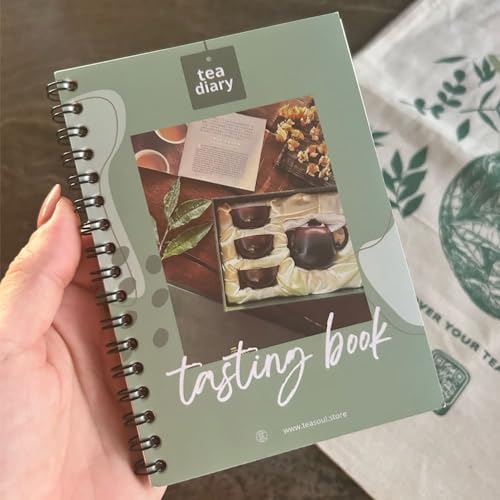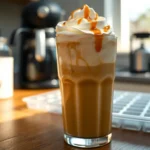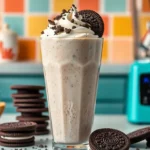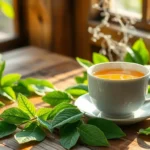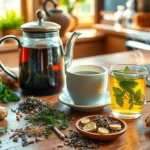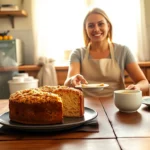There’s something magical about brewing the perfect cup of tea – it’s an art that connects us to centuries of tradition while offering countless health benefits and moments of pure comfort. Whether you’re a complete beginner or looking to refine your technique, mastering the fundamentals of tea preparation can transform your daily routine into a mindful ritual.
We’ve spent years perfecting our tea-making methods and we’re excited to share everything we’ve learned about creating that flawless cup. From selecting the right water temperature to timing your steep perfectly, these simple yet crucial steps will elevate your tea game dramatically.
The best part? You don’t need fancy equipment or expensive leaves to brew exceptional tea at home. With our foolproof guide, you’ll discover how proper technique can unlock incredible flavors from even the most basic tea bags, turning your kitchen into your personal tea sanctuary.
Equipment Needed
Creating exceptional tea requires minimal equipment that most home cooks already possess. We believe in keeping tea preparation simple and accessible while still achieving remarkable results.
Essential Equipment:
- Kettle or pot – Electric or stovetop models work equally well for heating water
- Teapot or heat-resistant mug – Glass or ceramic vessels preserve flavor integrity
- Fine-mesh strainer – Necessary for loose leaf teas to prevent debris in your cup
- Measuring spoons – Ensures consistent tea-to-water ratios for optimal flavor
- Timer – Critical for tracking steeping duration and preventing over-extraction
Optional Enhancements:
- Tea infuser or steeping basket – Convenient for loose leaf brewing without straining
- Thermometer – Helps achieve precise water temperatures for delicate teas
- Tea cozy – Maintains warmth during extended steeping sessions
- Gaiwan or traditional teapot – Elevates the brewing experience for tea enthusiasts
We recommend starting with basic equipment before investing in specialized tools. Your kitchen likely contains everything needed to brew exceptional tea right now. Electric kettles offer convenience and often include temperature settings that eliminate guesswork. Ceramic teapots distribute heat evenly and maintain temperature longer than metal alternatives.
Glass vessels allow you to observe the tea’s color development during steeping. This visual cue helps determine optimal strength and prevents over-brewing. Stainless steel strainers work better than plastic versions because they resist staining and retain their shape over time.
Ingredients

The foundation of exceptional tea lies in selecting quality ingredients and understanding their unique characteristics. We recommend gathering these essential components before beginning your brewing journey.
Basic Tea Options
We start with the heart of every great cup – the tea itself. Here are our recommended options:
- Black tea (English Breakfast, Earl Grey) – robust and full-bodied
- Green tea – delicate with grassy, vegetal notes
- Herbal tea (chamomile, peppermint) – caffeine-free with diverse flavors
- Oolong tea – complex, partially oxidized variety
- White tea – subtle, naturally sweet profile
- Tea bag or loose leaf tea – choose based on your preference and equipment
Water Requirements
Water quality directly impacts your tea’s final taste, making this ingredient equally important as your tea selection. We prioritize these water specifications:
| Tea Type | Water Temperature | Boiling Instructions |
|---|---|---|
| Black tea | Full boil | Bring to complete boil |
| Herbal tea | Full boil | Bring to complete boil |
| Oolong tea | Full boil | Bring to complete boil |
| Green tea | 175-185°F (80-85°C) | Heat just below boiling |
| White tea | 175-185°F (80-85°C) | Heat just below boiling |
- Fresh, cold water – essential for optimal flavor extraction
- Avoid over-boiling – reduces oxygen content and creates flat-tasting tea
- Pre-warm teapot or cup – fill with hot water, then empty to maintain brewing temperature
Optional Add-Ins
- Milk – traditionally added to black tea after brewing
- Sugar – classic sweetening option
- Honey – natural sweetener with floral notes
- Lemon slice – adds citrus brightness
- Herbs or spices – cinnamon, mint, or ginger for enhanced complexity
- Other sweeteners – adjust to taste preferences
Instructions

We’ll guide you through each step of brewing the perfect cup of tea using proper techniques and timing. Our method ensures optimal flavor extraction while respecting the unique characteristics of different tea varieties.
Prep
We begin by gathering all necessary equipment and ingredients for our tea brewing session. Place your tea leaves or tea bags within easy reach alongside your teapot or cup. Position your kettle nearby for water heating and keep a fine-mesh strainer accessible if using loose leaf varieties. Measure out your tea portions according to your preferred strength, typically using one teaspoon of loose leaves or one tea bag per cup of water.
Heat the Water
We start by filling our kettle with fresh, cold water and bringing it to the appropriate temperature for our exact tea type. Black teas and herbal varieties require fully boiling water at 212°F (100°C) for optimal extraction. Green and white teas perform best with slightly cooler water between 175-180°F (80-82°C). Oolong teas need water heated to approximately 195°F while pu-erh varieties benefit from the full boiling temperature.
| Tea Type | Water Temperature | Heating Method |
|---|---|---|
| Black Tea | 212°F (100°C) | Full boiling |
| Green Tea | 175-180°F (80-82°C) | Heated but not boiling |
| White Tea | 175-180°F (80-82°C) | Heated but not boiling |
| Oolong | 195°F (90°C) | Nearly boiling |
| Pu-erh | 212°F (100°C) | Full boiling |
| Herbal | 212°F (100°C) | Full boiling |
We warm our teapot by pouring a small amount of boiling water inside, swirling it around the interior, then discarding the water. This preheating step maintains optimal brewing temperature throughout the steeping process.
Steep the Tea
We place our tea leaves or bags into the warmed teapot or cup before adding the heated water. Pour the hot water directly over the tea rather than adding tea to already-poured water for complete saturation and superior flavor development. Set our timer according to the exact steeping requirements for each tea variety.
Our steeping times follow these proven guidelines for maximum flavor extraction:
| Tea Variety | Steeping Time | Notes |
|---|---|---|
| Black Tea | 3-5 minutes | Use boiling water |
| Green Tea | 1-2 minutes | Avoid oversteeping |
| White Tea | 2-3 minutes | Gentle extraction |
| Oolong | 2-3 minutes | Balanced steeping |
| Pu-erh | 5 minutes | Longer extraction needed |
| Herbal | Variable | Check exact recommendations |
We monitor the steeping process carefully to prevent over-extraction, which can result in bitter or astringent flavors. Remove the timer when it signals completion rather than guessing the duration.
Strain and Serve
We remove the tea bags or strain loose leaves immediately after the steeping time completes to halt the extraction process. Pour the brewed tea through our fine-mesh strainer into serving cups if using loose leaf varieties. This step prevents leaf fragments from reaching the final beverage while ensuring smooth texture.
We serve our perfectly brewed tea either plain or enhanced with preferred additions such as milk, sugar, honey, or fresh lemon slices. Add these accompaniments gradually to taste, allowing the tea’s natural flavors to remain prominent while complementing rather than overwhelming the base brew.
Different Tea Types and Steeping Times

Understanding the unique characteristics of each tea variety allows us to extract optimal flavors through precise timing and temperature control. We’ve compiled essential steeping guidelines to help you master the art of brewing different tea types.
Black Tea
Black tea requires the longest steeping time and highest temperature to fully develop its robust character. We recommend steeping black tea for 3 to 5 minutes in water heated to 212°F for maximum flavor extraction. The full oxidation process gives black tea its bold and full-bodied profile that pairs beautifully with milk and sugar. Strong black varieties like English Breakfast and Earl Grey benefit from the longer steeping time to release their complex tannins and deep amber color.
Green Tea
Green tea demands careful attention to prevent bitterness from over-extraction. We steep green tea for exactly 2 minutes using water heated to 175 to 180°F to preserve its delicate vegetal notes. The minimal processing of green tea leaves maintains their natural antioxidants and creates a light refreshing flavor. Popular varieties like Sencha and Matcha showcase their grassy sweetness best when enjoyed plain or with a simple slice of lemon.
White Tea
White tea offers the most delicate brewing experience with its subtle and naturally sweet profile. We recommend steeping white tea for 1 to 2 minutes in water heated to 175 to 180°F to honor its gentle nature. The minimal processing and young buds create a tea that requires the shortest steeping time among all varieties. Silver Needle and White Peony varieties reveal their nuanced flavors best when served plain without any additions.
Herbal Tea
Herbal tea provides caffeine-free comfort with robust steeping requirements similar to black tea. We steep herbal varieties for 3 to 4 minutes using water heated to 212°F to extract maximum beneficial compounds from dried herbs and flowers. Popular herbal blends like chamomile and peppermint create soothing drinks perfect for evening relaxation. The absence of traditional tea leaves allows herbal teas to withstand longer steeping times without developing bitter notes.
Oolong Tea
Oolong tea strikes a perfect balance between black and green tea characteristics through its partial fermentation process. We steep oolong tea for 2 to 3 minutes using water heated to 195°F to capture its unique flavor complexity. The partial oxidation creates a tea that offers both floral lightness and rich depth in each cup. Traditional oolong varieties like Ti Kuan Yin showcase their distinctive taste profile best when enjoyed plain to appreciate their natural complexity.
| Tea Type | Steeping Time | Brewing Temperature |
|---|---|---|
| Black Tea | 3–5 minutes | 212°F |
| Green Tea | 2 minutes | 175–180°F |
| White Tea | 1–2 minutes | 175–180°F |
| Herbal Tea | 3–4 minutes | 212°F |
| Oolong Tea | 2–3 minutes | 195°F |
Tips for Perfect Tea

We’ve mastered the brewing process but achieving consistently exceptional results requires attention to exact details. These professional techniques will elevate your tea preparation from good to extraordinary.
Water Temperature Guidelines
Temperature control makes the difference between a perfectly extracted cup and a bitter disappointment. We recommend using these precise temperature ranges for optimal flavor extraction:
| Tea Type | Temperature | Notes |
|---|---|---|
| Black Tea | 212°F (boiling point) | Full boiling water extracts robust flavors |
| Green Tea | 175°F to 180°F (80°C) | Cooler water prevents bitterness |
| White Tea | 170°F to 180°F (80°C) | Gentle heat preserves delicate notes |
| Yellow Tea | 170°F to 180°F (80°C) | Similar to green tea requirements |
| Herbal Teas | 212°F (boiling point) | Hot water releases full herbal benefits |
| Fruit Teas | 212°F (boiling point) | High heat extracts fruit essences |
Steeping Time Recommendations
Timing determines whether your tea achieves perfect balance or becomes overpowering. We follow these guidelines to extract maximum flavor without bitterness:
| Tea Type | Steeping Time | Result |
|---|---|---|
| Black Tea | 3 to 5 minutes | Full-bodied strength |
| Green Tea | 2 to 3 minutes | Bright, fresh flavor |
| White Tea | 2 to 3 minutes | Subtle, delicate taste |
| Yellow Tea | 2 to 3 minutes | Mild, smooth character |
| Herbal Teas | 5 to 7 minutes | Complete infusion |
| Fruit Teas | 5 to 7 minutes | Rich fruit flavors |
Using a timer ensures consistency across every cup we brew. Starting with shorter steeping times allows us to adjust strength according to personal preference.
Tea Storage Best Practices
Proper storage preserves the quality and extends the lifespan of our tea collection. We store our teas in cool, dry locations away from direct sunlight and moisture sources.
Airtight containers protect tea leaves from air exposure that degrades flavor compounds. Glass jars, tin canisters, or sealed pouches maintain freshness longer than open packages.
We keep different tea varieties separated to prevent flavor transfer between delicate and robust varieties. Labeling containers with purchase dates helps us use older teas first while they retain peak quality.
Temperature fluctuations damage tea quality so we avoid storing containers near stoves, windows, or heating vents. Room temperature storage in pantries or cupboards provides ideal conditions for long term preservation.
Common Tea Making Mistakes to Avoid

Even experienced tea drinkers can fall into brewing habits that diminish their tea’s potential. We’ve identified the most frequent errors that prevent home brewers from achieving consistently excellent results.
Using Incorrect Water Temperature
Temperature control stands as the most critical factor in tea brewing success. Many beginners pour boiling water over every tea type without considering the delicate nature of certain varieties. Green teas require water heated to exactly 170°F (77°C) to prevent bitter compounds from overwhelming the subtle flavors. We recommend investing in a thermometer or temperature-controlled kettle to eliminate guesswork from your brewing process.
| Tea Type | Optimal Temperature |
|---|---|
| Black Tea | 212°F (100°C) |
| Green Tea | 170°F (77°C) |
| White Tea | 170-180°F (77-82°C) |
| Oolong Tea | 195°F (90°C) |
| Herbal Tea | 212°F (100°C) |
Steeping for Incorrect Duration
Timing mistakes create the most noticeable flavor problems in home-brewed tea. Oversteeping releases excessive tannins that create harsh bitterness while understeeping fails to extract the full flavor profile. We always check tea package instructions for exact steeping recommendations since each variety requires different timing. Loose tea typically needs 1 to 3 minutes in hot water with adjustments based on personal taste preferences.
Using Wrong Tea-to-Water Ratios
Proportion errors result in weak or overpowering tea that masks the intended flavor balance. Most tea types perform best with approximately one teaspoon of loose tea per 8 ounces of water. We measure our tea consistently to achieve repeatable results and adjust gradually based on strength preferences.
Ignoring Water Quality
Tap water containing chlorine and other contaminants introduces unwanted flavors that compete with tea’s natural characteristics. Filtered water provides the neutral foundation necessary for pure tea flavor expression. We always use filtered water to ensure our brewing water doesn’t compromise the final cup’s taste profile.
Leaving Tea Bags Too Long
Tea bags left steeping beyond recommended times create bitter brews that require added sweeteners to balance harsh flavors. We remove tea bags promptly after the appropriate steeping period to maintain optimal flavor balance. This simple timing adjustment prevents the need for corrective additions that mask tea’s natural character.
Variations and Flavor Enhancements

We believe the beauty of tea lies in its versatility and endless possibilities for customization. These enhancements allow us to transform our basic brewing techniques into personalized tea experiences.
Adding Milk and Sugar
We recommend adding milk and sugar to taste after the tea has steeped completely. This timing ensures the tea reaches its full flavor potential before we introduce any dairy or sweeteners. Whole milk creates the richest texture while skim milk offers a lighter alternative. Sugar dissolves most effectively when we add it to hot tea and stir gently until completely incorporated.
Our approach involves starting with small amounts and gradually increasing to find the perfect balance. We typically add one teaspoon of sugar and a splash of milk as starting points. Black teas pair exceptionally well with milk and sugar combinations while green and white teas benefit from lighter touches or alternative sweeteners like honey.
Creating Iced Tea
We create refreshing iced tea by steeping tea as usual then chilling it in the refrigerator or pouring it directly over ice. The key lies in brewing tea slightly stronger than normal since ice dilution reduces the final flavor intensity. We use approximately 1.5 times our standard tea amount when preparing iced versions.
Hot brewing followed by refrigerator chilling produces the smoothest results. We allow the tea to cool completely at room temperature before refrigerating to prevent cloudiness. Alternatively we pour freshly brewed tea over a glass filled with ice for immediate enjoyment. Sweet tea variations work best when we add sugar while the tea remains hot for optimal dissolution.
Making Tea Blends
We combine different types of tea leaves or herbs to create unique blends that reflect our personal taste preferences. Black green and herbal teas offer excellent bases for experimentation. Our blending approach starts with a dominant tea type then adds complementary flavors in smaller proportions.
Popular combinations include black tea with bergamot oil for Earl Grey variations or green tea mixed with jasmine flowers for floral notes. We recommend testing small batches before committing to larger quantities. Herbal additions like chamomile lavender or mint provide caffeine free options that blend beautifully with traditional teas.
Spice blends offer another dimension where we incorporate cinnamon cardamom or ginger for warming chai inspired creations. Our ratio guideline suggests using 70% base tea and 30% additional ingredients as a starting framework for balanced flavor profiles.
Conclusion
We’ve shared everything you need to transform your daily tea routine into something extraordinary. With the right water temperature steeping times and quality ingredients you’ll brew café-quality tea from your own kitchen.
Remember that tea-making is both an art and a science. Start with our basic guidelines then adjust to discover your personal preferences. Whether you’re crafting a morning black tea or an evening herbal blend the techniques we’ve covered will serve you well.
Most importantly don’t be afraid to experiment. Try different combinations explore new flavors and make tea preparation a mindful moment in your day. Your perfect cup is waiting to be discovered.
Frequently Asked Questions
What equipment do I need to brew the perfect cup of tea?
You only need basic equipment that most home cooks already have: a kettle or pot for heating water, a teapot or heat-resistant mug for steeping, a fine-mesh strainer for loose leaf teas, measuring spoons for consistent ratios, and a timer. Optional items like a tea infuser, thermometer, or tea cozy can enhance your brewing experience but aren’t essential.
What’s the ideal water temperature for different types of tea?
Water temperature varies by tea type: black and herbal teas require boiling water at 212°F, green tea needs 175-180°F, white tea prefers 170-180°F, and oolong tea works best at 195°F. Using the correct temperature prevents bitterness in delicate teas and ensures optimal flavor extraction for stronger varieties.
How long should I steep different types of tea?
Steeping times depend on the tea variety: black tea should steep for 3-5 minutes, green and white teas for 2-3 minutes, herbal teas for 5-7 minutes, and oolong tea for 2-3 minutes. Following these guidelines prevents over-extraction, which can make tea bitter, while ensuring you extract maximum flavor.
What are the most common tea brewing mistakes to avoid?
The biggest mistakes include using boiling water for delicate teas like green tea, which causes bitterness; oversteeping or understeeping; using incorrect tea-to-water ratios; using unfiltered water that adds unwanted flavors; and leaving tea bags in too long. Always remove tea bags promptly after the recommended steeping time.
How should I store tea to maintain its quality and flavor?
Store tea in cool, dry locations using airtight containers to preserve flavor and quality. Avoid exposure to light, moisture, and strong odors. Keep different tea varieties separate to maintain their unique characteristics, and use older teas first to ensure optimal freshness. Proper storage significantly extends tea’s shelf life.
Can I enhance my tea with additional flavors and ingredients?
Yes! Add milk, sugar, honey, or lemon after steeping to taste. Start with small amounts and adjust gradually. You can create iced tea by brewing stronger than usual and chilling, or make unique blends by combining different tea leaves or herbs. Popular additions include spices like cinnamon, ginger, or cardamom.
Do I need expensive tea leaves or equipment to make great tea?
No, you can brew exceptional tea using basic tea bags and standard kitchen equipment. The key is mastering fundamental techniques like proper water temperature, steeping time, and ratios. Quality comes from technique rather than expensive ingredients or specialized equipment, making great tea accessible to everyone.






